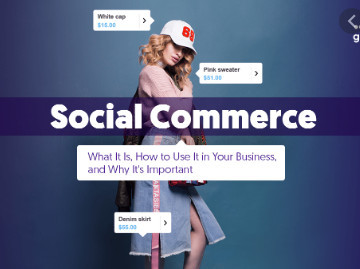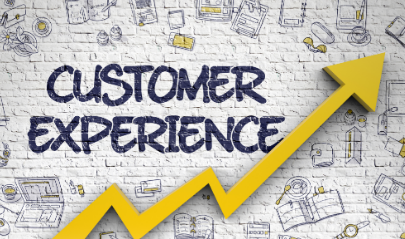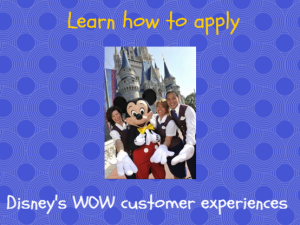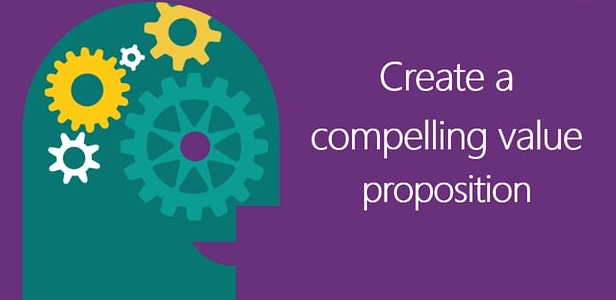Tag: customer experience
Consumer Engagement is the Key to a Social Commerce Business
Nonversation? Heard that term before? In context with a social commerce business? Hope not. Simple definition: the opposite of a productive conversation.
Many nonversations transpire at elevators, bus stops, and the like. They also occur during business situations, in which participants do not really listen meaningfully to one another. Not what you want for a world-class social commerce business.
We define social commerce business as the use of social engagement to personalize and energize the shopping experience. It provides a social context to shopping and is both a channel and a way of doing business.
As Warren Buffet has so famously said, “When the tide goes out, you see who’s not wearing a bathing suit.” Well, the tide has certainly gone out and there are a lot of naked companies around. Many of the failed companies will insist that they had been the victims of a “perfect storm.”
However, in the years to come, it will become apparent that some companies have actually used the crises to gain market share, increase employee loyalty and enhance profitability while their competitors were crumbling.
So how do we propose to build a world-class social commerce business? Here are 10 ways we recommend to our clients:
It starts with great employees
Employees are your service. Hire for their friendly, caring attitude and train for skills and knowledge. Empower them to be customer advocates.
Make social the centerpiece
Socialize your business. People do business with people, so make it personal. Customers should want to do business with you because of you and your employees. Make your customers “feel at home.” You may have a great location, cool displays, great value, etc.
That’s all great, but if your people can’t make your customers feel welcome and appreciated, all of the other doesn’t matter so much.
Share all great service stories
As soon as possible with all of your team. Celebrate the smallest of successes.
Show common courtesy

All the time. This leads to customer respect, which leads to conversation and the building of relationships and mutual trust.
Care for customers
Assume you are the company owner. Not all owners or executives make great leaders, but the ones that are should be emulated. Watch how they take pride in how they deal with customers and employees, and then follow their lead.
Analyze when things go right.
When a company receives a complaint people usually have discussions to find out what went wrong and how to prevent it from happening again. Next time you receive a letter of praise, meet to find out what went right and how it can be repeated.
All the time.
Amazing companies don’t always deliver “Wow!” type experiences, they are just better than average – all of the time. All of the time is the secret sauce.
Attention to details
Sometimes it’s the little things that make the biggest impact. Figure out the details that your customers enjoy and make them a routine part of doing business with you.
Be vigilant … always listening and learning. Try and remember things customers tell you and then show them you listened. Trying new ideas. Put your social commerce business in motion by being adaptable.
Customer experience
One sure way to erode loyalty and social commerce is to deliver an inconsistent customer service experience. One time it’s great. The next time it is barely average.
And, the next time it may be great again. Inconsistency creates uncertainty and erodes customer confidence and trust. Lack of confidence and trust leads to giving customers a reason to consider your competition.
Create a customer service culture
It starts by practicing what we call, “The Employee Golden Rule”: Treat your employees the way you want the customer treated – maybe even better.
Now it’s up to you. Choose one customer service strategy to start with. Have a meeting around it. Discuss how to implement it. Then, do it and repeat the process, creating something good for your customers to talk about! Soon you will have a much stronger social commerce business.
Please share a social commerce business experience with us.
Like this story? Follow Digital Spark Marketing on LinkedIn for 3-4 short, interesting blogs, stories per week.
Digital Spark Marketing will stretch your thinking and your ability to adapt to change. We also provide some fun and inspiration along the way.
Reading from Digital Spark Marketing’s library:
8 Popular Social Media Initiatives for Customer Engagement
Does Your Business Build Customer Trust?
Social Commerce Business … What Ben and Jerry’s Knows That You Should Know
Successful Entrepreneurs: How to Supercharge Your Results
Being right keeps us in place. Being wrong forces us to explore. A great quote from Steven Johnson. And the more exploring that you do, the more you learn. Often much that can be applied to your stack of lessons from successful entrepreneurs.

Related post: Retail Design …11 Ways Businesses Are Responding to the Future
But life can be tough at times tough. Life as an entrepreneur is tougher.
Your safety net is you. No health plan with 47 sick days. And no paid vacation. No sabbatical after 10 years of mind-bending effort.
The other day one of my readers commented I was the oldest person she knew creating social media content all the time.
Then she said it was a compliment.
We both laughed.
Then there was an awkward pause.
While her statement clearly wasn’t true, being relatively seasoned in business means I HAVE learned many valuable career lessons that would have been great to know when my business career started.
The more experience we have, the more mistakes we’ve made—and that’s a good thing, according to many business innovation experts.
That’s how it has always been
Great people learn hard lessons.
Sigmund Freud was booed off stage the first time he presented his theories to a group of scientists in Europe. He went on to win the Goethe Award for his work in psychology.
Henry Ford failed at farming, being an apprentice, and as a machinist — going bankrupt five times. He went on to modernize mass production.
Leo Tolstoy flunked out of law school and was labeled “unable to learn” by his professors. He went on to become one of the world’s greatest novelists.
But it’s not about them
It’s about you. About what you are prepared to do in order to be successful. Here are my 10 top lessons for all entrepreneurs … the ones I wished I knew when I started:
Successful entrepreneurs … put people first
Learned this one quite early in my management career. Your people are your business. No question about that. And your business will only go as far as your people will take it. So put them first on your list and take good care of their welfare.
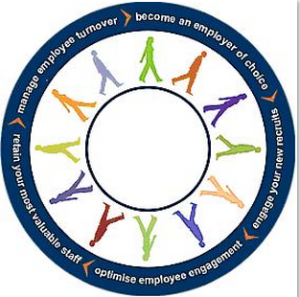
Talent hound
Be the best talent hound you can be in searching for the best employees. Know this … surrounding yourself with the very best is the top and quickest way to success.
Value propositions
There is a tremendous amount of competition in any market that you chose. And it is continually growing. Your success depends on your business is better than the competition.
Knowing what those advantages are and putting them into value propositions is what will put and keep you ahead.
Successful entrepreneurs stories … marketing
Know this simple fact about marketing. Everything is marketing and everyone is a marketer. It takes a while to really appreciate this lesson’s true meaning. Stick with it long enough and you will understand.
Customer experience
Your customer’s experiences in your shop are the new marketing, pure and simple. The better the experiences, the more the customers will remember you and return. Work hard at creating WOW experiences as much as possible.

Sociability
Make friends with as many customers as you can. Customers would always prefer to do business with friends. Start with a smile and positive conversation in engaging customers. Selling is something to be strictly avoided. Substitute just being as helpful as possible.
Change agent
Be a change agent in everything business. Anticipate and embrace change in your market. Adapt is the name of the game, as soon as possible. This is a hard lesson to learn as often change is required while things are still looking good.
Continuous learning
Now more than ever, things are changing at blazing speed. There are only two ways to keep up. They are continually learning and applying what you learn.
Simplicity
Keep everything you do as simple as possible. No exceptions.
The customer
The last and most important lesson. Know, understand, and care about your customer. Your rule 1.
Learning from this list of successful entrepreneurs
Want some inspiration? Start following inspiring people. And when I say “follow,” I am not referring only to Twitter, although that is an excellent starting point. I mean follow as in study, investigate, hear, heed, sit at their feet, and absorb the lessons.
Here are seven thought leaders (in no particular order) that are worth following.
Tony Hsieh
The CEO of Zappo’s is so much more than a shoe salesman. Hsieh is the model for how corporate executives can stay firmly connected to the real world. His Tweets alone are worth his reputation.
Related: The ‘Aha!’ Moments of Famous Inventors (Infographic)
Travis Kalanick
OK, I admit my bias as a sold-out fan of Uber, but Kalanick’s story is quite remarkable. I will continue to follow this young genius to see how he navigates an endless stream of obstacles. Kalanick’s lessons for entrepreneurs are invaluable.
Marie Forleo
There are those who make things happen and those who wonder what happened. Count Forleo in the former category. The term “self-made woman” is more than appropriate for her.
This energetic, brash, and straight-talking success guru has fashioned an amazing company with a vast following.
Guy Kawasaki
I first read How to Drive Your Competition Crazyroughly 20 years ago and I have never looked at competitive positioning the same way again.
The former chief evangelist for Apple is a serial entrepreneur and investor with an eye for success. His Tweets are solid gold.
Related: 10 Movies Every Entrepreneur Needs to Watch
Daniel Kahneman
This Nobel Prize-winning founder of behavioral economics won’t blow you out of the water with flashy presentations, but he will make you think about life in entirely new ways.
His masterpiece book Thinking Fast and Slow took me forever to read because every page provided content that demanded I pause, reflect on the application, and change my thinking accordingly. Watch his videos on YouTube, Ted Talks, and Big Think.
Gary Vaynerchuk
You can read his books or his blog, but you really need to experienceGaryvee (Google it) to get the entire, unfiltered flavor of Vaynerchuk’s brilliance.
His enterprise provides a blueprint for entrepreneurial success in the digital age. Garyvee’s unending approachability has endeared him to millions.
Malcolm Gladwell
If Malcolm Gladwell wrote nothing but knock-knock jokes, I would read every one of them. Of course, his version would go something like, “Knock-knock. Who’s there? An observationalist with an uncanny knack for seeing things that everyone else overlooks.”
Gladwell is deeply cerebral and yet easily readable — a great combination for the ADD entrepreneur. His study of human nature is spellbinding.
So, those are my suggestions. Who is on your list?
Related post: Business Leaders … 7 Lessons Jack Welch Taught Me about Them
It’s up to you if you’re going to make it.
The bottom line
What your customer perceives about your company is what determines whether they will stay with you. And their perception is built one contact at a time. Even one bad experience can taint their perception of you. So make sure every contact they have is a great one. Create customer evangelists by caring about your customers and showing it with everything you do.
All you get is what you bring to the fight. And that fight gets better every day you learn new lessons.
The question is:
“What lessons are you learning today?”
When things go wrong, what’s most important is your next step.
Try. Learn. Improve. Repeat.
Is your business devoting enough energy in each of these areas?
Do you have a story about learning lessons and business adaptation you can share with this community? Have any questions or comments to add in the section below?
Digital Spark Marketing will stretch your thinking and your ability to adapt to change. We also provide some fun and inspiration along the way.
Want to learn more about Digital Spark Marketing?
Check out these additional articles on business lessons from our library:
Business Leaders … 7 Lessons Jack Welch Taught Me about Them
The Business Intelligence Process Part 3 Competitive Analysis
10 Entrepreneur Lessons You Need to Know
10 Entrepreneur Lessons You Need to Know
The more exploring that you do, the more you learn. Often much that can be applied to your stack of entrepreneur lessons for businesses.

But life can be tough at times tough. Life as a blog entrepreneur is tougher.
We live in a world where over 4 million blog posts are published every day.
How do you stand out in a sea of bloggers who have probably covered all the key topics from a thousand different angles? Do you follow the trend or create a technique of your own? Everyone loves a good story. It’s the part of your copy even skimmers take time to read.
I try to start every article on my blog with a story attacking the reader’s pain point. I want them to know this is not just another article from a blogger trying to make a quick buck but someone who genuinely understands their problems.
Your safety net is you. No health plan with 47 sick days. No paid vacation. No sabbatical after 10 years of mind-bending effort.
The other day one of my readers commented I was the oldest person she knew creating social media content all the time.
Then she said it was a compliment.
We both laughed.
Then there was an awkward pause.
While her statement clearly wasn’t true, being relatively seasoned in business means I HAVE learned many valuable career lessons that would have been great to know when my business career started.
The more experience we have, the more mistakes we’ve made—and that’s a good thing, according to many business innovation experts.
That’s how it has always been
Great people learn hard lessons.
Sigmund Freud was booed off stage the first time he presented his theories to a group of scientists in Europe. He went on to win the Goethe Award for his work in psychology.
Henry Ford failed at farming, being an apprentice, and as a machinist — going bankrupt five times. He went on to modernize mass production.
Leo Tolstoy flunked out of law school and was labeled “unable to learn” by his professors. He went on to become one of the world’s greatest novelists.
But it’s not about them
It’s about you. About what you are prepared to do in order to be successful. Here are my 10 top lessons for all entrepreneurs … the ones I wished I knew when I started:
People first
Learned this one quite early in my management career. Your people are your business. No question about that. And your business will only go as far as your people will take it. So put them first on your list and take good care of their welfare.

Related post: Building Collaboration and Sharing Skills in your Staff
Talent hound
Be the best talent hound you can be in searching for the best employees. Know this … surrounding yourself with the very best is the top and quickest way to success.
Value propositions
There is a tremendous amount of competition in any market that you chose. And it is continually growing. Your success depends on your business being better than the competition. Knowing what those advantages are and putting them into value propositions is what will put and keep you ahead.
Marketing
Know this simple fact about marketing. Everything is marketing and everyone is a marketer. It takes a while to really appreciate this lesson’s true meaning. Stick with it long enough and you will understand.
Customer experience
Your customer’s experiences in your shop are the new marketing, pure and simple. The better the experiences, the more the customers will remember you and return. Work hard at creating WOW experiences as much as possible.
Sociability
Make friends with as many customers as you can. Customers would always prefer to do business with friends. Start with a smile and positive conversation in engaging customers. Selling is something to be strictly avoided. Substitute just being as helpful as possible.
Change agent
Be a change agent in everything business. Anticipate and embrace change in your market. Adapt is the name of the game, as soon as possible. This is a hard lesson to learn as often change is required while things are still looking good.
Continuous learning
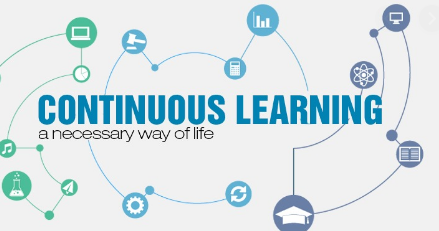
Now more than ever, things are changing at blazing speed. There is only two ways to keep up. They are continuous learning and applying what you learn.
Simplicity
Keep everything you do as simple as possible. No exceptions.
The customer
The last and most important lesson. Know, understand, and care about your customer. Your rule 1.
It’s up to you if you’re going to make it.
The bottom line
As we change at a faster and faster pace, ideas adequate yesterday are no longer are good enough.
And with digital disruption facing an increasing number of industries, most firms must come up with the best ideas for change or move to a slow failure.
The myths of new ideas must be set aside to let the new idea facts take over.
The question is:
“What lessons are you learning today?”
When things go wrong, what’s most important is your next step.
Try. Learn. Improve. Repeat.
More reading on creativity and innovation from Digital Spark Marketing’s Library:
Learn How to Think What No One Else Thinks
Generating Ideas by Convergent Thinking
Amazon and Managing Innovation … the Jeff Bezos Vision
Creating Customer Experience Impact with Random Acts of Kindness
David Freemantle is quoted: Feelings have a critical role in the way customers are influenced. Random acts of kindness ideas? You can make great strides in customer service and customer experience by seemingly small but very thoughtful actions.
Remember that customer experiences are the new marketing tactics.
Check out this video on a memorable customer service experience from popular customer service speaker Ross Shafer.
Quite an impact for a simple can of Coca-Cola, isn’t it? Random acts of kindness will do it every time, yes?
Related: 10 Ways to Employ Customer Experience for Influence
Let’s take another example, this one coming from Fred Reichheld, a Fellow at the management consultancy firm Bain & Company:
One of my favorite examples of this happened at Rackspace, the managed hosting and cloud computing company. An employee on the phone with a customer during a marathon troubleshooting session heard the customer tell someone in the background that they were getting hungry.
https://digitalsparkmarketing.com/employee-empowerment/

An awesome customer experience story.
As the employee tells it:
“So I put them on hold, and I ordered them a pizza. About 30 minutes later, we were still on the phone, and there was a knock on their door. I told them to go answer it because it was pizza! They were so excited.”
Our takeaway
While the cost of the gifts/actions is quite small, the human mind simply cannot refuse the construct of simple reciprocity. Reciprocity can be summed up as our natural inclination to feel grateful for favors and our desire to “pay them back,” no matter how small they are.
The other thing that we consider about reciprocity is that research has shown us that the intentions of the ‘giver’ can affect the perceived value of the gift. This is why random acts of kindness ideas work so well.
Customers perceive the service as a genuine act of kindness rather than as you trying to buy their affection with costly gifts.
So remember, it doesn’t take huge expenses to win customers over!
You can’t over prepare on continually improving your customers’ experiences.
Remember, customers, create the most value for you … when you create the most value for them.

Like this story? Follow Digital Spark Marketing on LinkedIn for 3-4 short, interesting blogs, stories per week.
Please share a story about a creative customer experience design strategy with this community.
Need some help in building better customer trust from your customer experiences? Creative ideas to help grow your customer relationships?
Call today for a FREE consultation or a FREE quote. Learn about some options to scope your job and pay for results.
Call Mike at 607-725-8240.
All you get is what you bring to the fight. And that fight gets better every day you learn and apply new ideas to make your customer experiences better.
When things are not what you want them to be, what’s most important is your next step. Call today.
Test. Learn. Improve. Repeat.
Are you devoting enough energy to improving your continuous learning for yourself and your team?
Digital Spark Marketing will stretch your thinking and your ability to adapt to change. We also provide some fun and inspiration along the way. Call us for a free quote today. You will be amazed at how reasonable we will be.
More reading on customer experience from our Library:
10 Next Generation Customer Service Practices
Handling Customer Complaints … 8 Mistakes to Avoid
7 Ways to Create a Customer Service Evangelist Business
Mike Schoultz is a digital marketing and customer service expert. With 48 years of business experience, he consults on and writes about topics to help improve the performance of small business. Find him on Facebook, Twitter, Quora, Digital Spark Marketing, and LinkedIn.
Business Proposition: The Practical Design Guide to Winning Business
Does your business have a winning business proposition. We have found many clients that cannot articulate their unique business proposition. In our opinion, trying to win against your competition without good business discrimination is like trying to sail with no wind. Nothing is more important for your business than competitive advantages … the more you have, the stronger your business. So pay close attention as we tell you how to build a winning business proposition.
Check out our thoughts on creative marketing.
Marketing is often confused with promotion, but it’s more than that. As Peter Drucker put it, “the aim of marketing is to know and understand the customer so well the product or service fits him and sells itself.” In truth, marketing is about insights more than anything else.
So how do you derive good differentiation and insights? For starters, make sure you understand the concept of a value proposition:
Here is a short video explaining the concept of a value proposition.
Start by understanding there are two ways to win in a competitive market:
Achieve sustainable lower cost (and therefore price) than your competition for the same products and services (very difficult to sustain)
Deliver more value, despite equal or higher price
A business is a value delivery system. The heart of a winning value proposition is the end-result experiences of value a business intends to deliver to its target customer segments. It needs to be articulated for the customer value end-state … not for your product, service, or business process.
Here is a short 4-minute video to refresh you on this subject:
How to write a value proposition? Defining 6 core elements of Value Propositions
To understand your potential value to customers:
Be your customers … study and creatively infer value by observing/learning from what they do.
Do your claims surpass the value alternatives in the marketplace? Do your customers believe your claims?
So where should you look for value in your business’s value delivery chain? The top areas include:
Best value
The most useful definition of unique selling propositions (USP) is a believable collection of the most persuasive reasons people should notice you and take the action you’re seeking.
This way, it guides your decisions much more clearly and can be used as the basis for marketing messages.
If you don’t have strong selling propositions, people don’t have good reasons to do either of those.
For example, if your online bookstore has average selection, decent prices, delivery, a guarantee, good customer service, and a website, why would anyone buy from you? There’s surely a competitor who beats you in at least some of those aspects.
You don’t have to be the best in every way. Sure, it’s great if you are. But realistically, it’s difficult enough to be the best in just a couple of ways.
However, if you’re the best in at least several ways, you’re the best option for the people who value those propositions.
Starbuck’s doesn’t have the lowest prices. Amazon isn’t the most prestigious book seller. Zappos’ isn’t the easiest way to shop. People buy from them for other reasons.
So, if your bookstore has the largest selection, for example, but the other things are just average, the people who value a large selection have a reason to buy from you.
You must have some product or service elements that are unique. Something has to make you the best option for your target customers.
Otherwise, they have no good reason to buy from you.
Business proposition … the heart of the proposition
The heart of a winning unique selling proposition is the end result experiences of value a business intends to deliver to its target customers. The end result experiences are what you should consider.
For example, a customer shopping for an electric drill is looking for one that can deliver holes as easy and conveniently as possible. Also, one that can deliver the most multiple functions.

Time
Time is the most important of customer priorities today. What can you do to keep your time demands to a minimum?
Convenience and easy to work with
Ones related to customer time for sure. Do everything you can to make things simple as possible.

Customer experience/service
Great service creates a great experience and becomes something worth your customer talking to his friends about. It is the most important element of your word of mouth marketing campaign.
Trust and warranty
Trust is the most often named reason customers say they select businesses to do business with. Good warranties are great places to start building trust.
Business proposition template … new ways
Consider value in new ways of doing business. The best example for this value proposition in my mind is Netflix.
